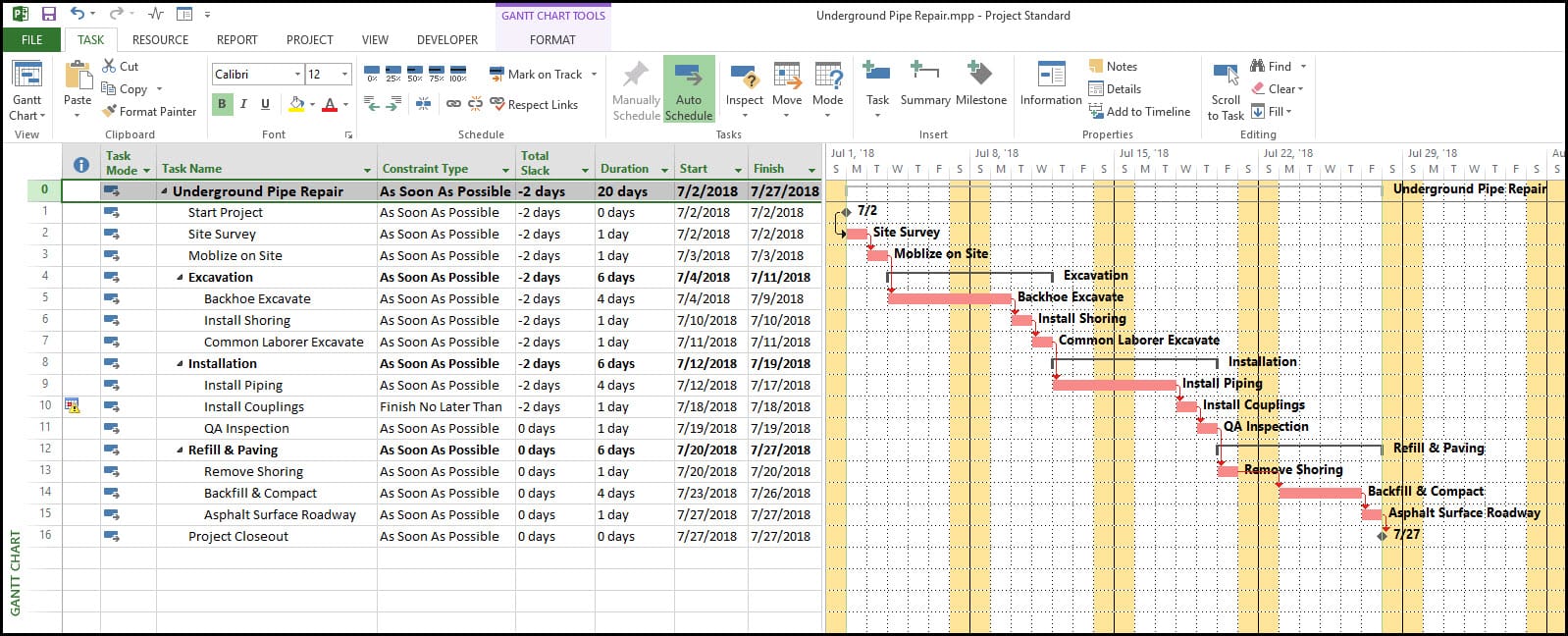Microsoft Project Training in Dehradun
Microsoft Project
Microsoft Project is a project management software application developed and sold by Microsoft. It is designed to assist project managers and teams in planning, managing, and executing projects of various sizes and complexities. Microsoft Project provides a set of tools and features that enable users to create and manage project schedules, allocate resources, track progress, and analyze project data.

Microsoft Project Scope
The term “Microsoft Project Scope” typically refers to how Microsoft Project, the project management software developed by Microsoft, helps project managers and teams define and manage the scope of their projects. In the context of Microsoft Project, “scope” relates to what needs to be accomplished within a project, including the project’s objectives, tasks, deliverables, and boundaries. Here’s how Microsoft Project can assist with managing project scope:
Task Definition: Microsoft Project allows users to define and list all the tasks or activities that need to be completed to achieve the project’s objectives. Each task can have attributes such as start date, end date, duration, and dependencies on other tasks. This task list forms the basis of the project’s scope.
Task Dependencies: Within Microsoft Project, you can establish dependencies between tasks. These dependencies define the order in which tasks should be completed. This helps in ensuring that the project stays within scope by following a predefined sequence of activities.
Resource Allocation: The software enables project managers to allocate resources (such as personnel, equipment, or materials) to specific tasks. This ensures that the necessary resources are available to complete the defined scope of work.
Baseline Planning: Microsoft Project allows users to create a baseline, which is a snapshot of the project schedule and scope at a particular point in time. Baseline planning helps in monitoring and controlling scope changes by providing a reference point for comparison.
Scope Change Management: When changes to the project scope are proposed or requested, Microsoft Project can help in assessing the impact of those changes on the project schedule, resources, and budget. This aids in making informed decisions about whether to approve or reject scope changes.
Scope Verification: Microsoft Project can be used to track progress against the defined scope. Project managers can input actual data and compare it to the planned scope to ensure that the project is on track and within the defined boundaries.
Scope Reporting: The software provides reporting and visualization tools that allow project managers and stakeholders to communicate and analyze the project’s scope effectively. This includes Gantt charts, resource allocation reports, and other project management reports.
It’s important to note that while Microsoft Project is a valuable tool for managing project scope, it is ultimately the responsibility of the project manager and the project team to define, document, and control the scope of a project. Microsoft Project provides the means to plan, track, and manage scope, but it does not replace the need for effective project management practices and communication among project stakeholders.
Additionally, organizations may have their own specific processes and methodologies for managing project scope, and Microsoft Project can be customized to align with those processes.
Get a better understanding of the Process, Stages, and Rules of Managing Projects.
Microsoft Project - the most user-friendly and flexible project management tool enabling organizations to start and deliver the intended business value.

Contact Us
-
9d Astley Hall, Dehradun, Above Book World, Dehradun, Uttarakhand 248001
- Sudhowala Chowk, Dehradun, Uttarakhand, 248007
- +91 7351229999
- info@reeaait.com
Microsoft Project Training Objective
When you refer to “Microsoft Project Training Objective,” you are likely talking about the specific learning goals or objectives that individuals or teams aim to achieve when undergoing training on Microsoft Project, the project management software developed by Microsoft. These training objectives are designed to outline what participants should be able to accomplish or understand after completing the training. The specific training objectives can vary depending on the audience, the level of expertise, and the goals of the training program. Here are some common training objectives for Microsoft Project:
Basic Proficiency:
- To understand the fundamental concepts and terminology used in Microsoft Project.
- To be able to navigate the Microsoft Project user interface.
- To create a basic project schedule with tasks and dependencies.
Task and Resource Management:
- To learn how to define and manage project tasks and milestones.
- To understand how to allocate and manage resources within a project.
- To assign tasks to team members and track their progress.
Advanced Scheduling:
- To master the creation and management of complex project schedules.
- To understand and apply scheduling techniques, such as critical path analysis and resource leveling.
- To deal with constraints, deadlines, and task dependencies effectively.
Reporting and Analysis:
- To generate various reports and visualizations to communicate project status.
- To analyze project data and identify potential issues or delays.
- To use Microsoft Project’s reporting and analysis features effectively.
Risk Management:
- To identify and assess project risks.
- To integrate risk management into the project schedule.
- To develop contingency plans and manage risks within Microsoft Project.
Integration and Collaboration:
- To integrate Microsoft Project with other Microsoft Office applications (e.g., Excel, Teams, SharePoint).
- To collaborate with team members and stakeholders using Microsoft Project’s collaboration features.
Customization and Advanced Features:
- To customize Microsoft Project to align with specific organizational processes and methodologies.
- To utilize advanced features and functionalities of Microsoft Project for more complex projects.
Baselining and Scope Control:
- To create project baselines to track changes against the original project plan.
- To manage scope changes and assess their impact on the project.
Portfolio Management (for enterprise users):
- To understand how to manage multiple projects as a portfolio using Microsoft Project Server or Project Online.
Certification Preparation (if applicable):
- To prepare for Microsoft Project certification exams, if the training program is designed for certification.
These training objectives serve as a roadmap for designing and delivering effective Microsoft Project training programs, ensuring that participants acquire the necessary skills and knowledge to use the software effectively in their project management roles. The specific objectives will vary based on the audience’s prior experience and the goals of the training initiative.
- Introduction to Project Management
- Calendars
- Task and its relationship
- Work Breakdown Structure
- Critical Path Method
- Resource Assignment
- Resource Analysis and Leveling
- Project Tracking
- Project Forecasting
- Text and Graphical Reporting
- Introduction to Project Online
- Enterprise Projects
- Task and its relationship
- Managing Resources
- Time and Task Management
- Managing Issues and Risks
- Custom Fields
- Alerts and Reminders
Deliverables
- Microsoft Project courseware/Workbook
- Project-based training
- A participatory approach to classes
- The right mix of theory and practical
- Training by qualified, experienced professionals
- Sophisticated classroom and modern presentation tools
- Post-training support

